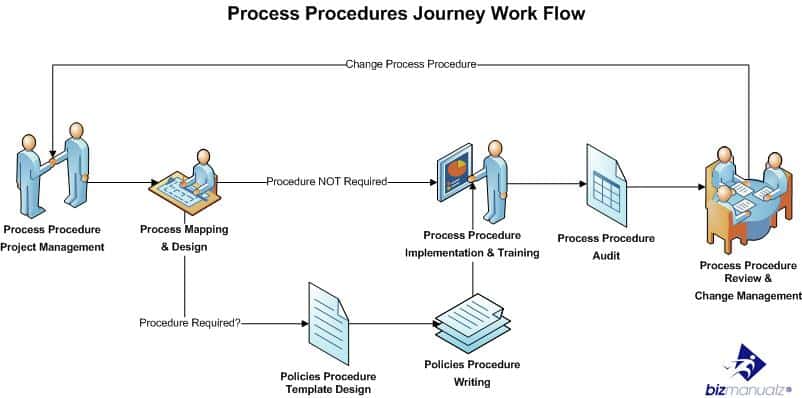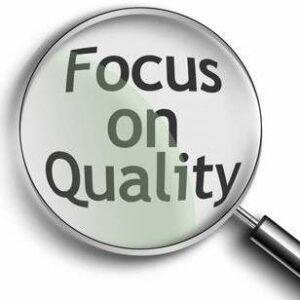What Happens if Process is Not Followed?

Processes bring order. They reduce errors, keep tasks consistent and save time. Without them, chaos takes over, and nothing gets done. Neglecting processes and not following procedures causes problems. People can miss steps, leading to flawed results, poor quality, and even audit findings for not following procedures or processes. They can also get lost, not knowing what to do next. What happens if process is not followed?
The Importance of Following a Process
When each person has their own way of doing things, miscommunication ensues. But when everyone follows the same process, collaboration is smoother. Companies have suffered huge losses due to lack of processes. Volkswagen is a prime example – their emissions scandal in 2015 cost them dearly in reputation and money.
No process? Don’t do it. It’s like trying to cut a cake with a chainsaw!
Consequences of Not Following a Process
Not following a process can have dire consequences. It is the same as people no following procedures. Mistakes, inefficiency, lack of accountability, missed deadlines, poor quality output, and wasted resources are all common outcomes. One may also miss out on opportunities for improvement and innovation.
To avoid these risks, it’s essential to recognize the importance of processes and embrace them wholeheartedly. Establish clear procedures, communicate them effectively, and hold everyone accountable to ensure success. Remember, following a structured process enhances productivity, efficiency, and overall outcomes. Don’t be afraid to take advantage of these benefits!
Negative Impact on Results and Outcomes
Text: Process not followed? That can have a bad effect on results and outcomes! Let’s dive deep into the consequences.
- Efficiency lost: No process means less productivity and efficiency. Without clear steps, tasks take longer, wasting time and resources.
- Structure gone: When no process is set, there’s no structure for work. This leads to confusion, miscommunication, and overall disorganization.
- Quality slips: Following a process ensures the same quality. Skipping steps or not following them correctly can hurt the end result.
- Bad decisions: With a process in place, decisions are made using frameworks and criteria. Ignoring them can lead to hasty choices, which don’t always turn out great.
Plus, neglecting processes can hurt team collaboration and accountability. Individuals may feel less responsible for their actions, which can damage teamwork.
Pro Tip: To avoid the negative impact caused by disregarding processes, ensure everyone understands why they’re important. Training sessions and communication can help to emphasize the importance of following processes for successful outcomes.
Team collaboration and morale can be ruined when processes are not followed, leaving coworkers to fit together like mismatched puzzle pieces.
Damage to Team Collaboration and Morale
No process could be like driving blindfolded through a minefield – it’s only a matter of time before legal and regulatory issues arise. Decreased productivity, lack of communication, confusion and uncertainty, inefficient decision-making, poor quality work, and erosion of trust are all inevitable outcomes of skipping process. It can all lead to damage to team collaboration and morale
To avoid these issues, it is vital to have clear processes in place. Defining roles and responsibilities helps everyone understand their tasks and how they contribute to the end goal. Establishing communication channels allows open dialogue and collaboration. Regular check-ins or meetings address any challenges quickly.
Training opportunities for team members improve their skills and boost confidence. This investment shows commitment to their growth and creates a positive work environment. Feedback mechanisms enable team members to provide input on improving processes.
This empowers them to take ownership and stay motivated. By following these steps, teams can restore morale, improve productivity, and produce higher-quality work. Ultimately, this will lead to a more satisfied team.
Potential Legal and Regulatory Issues
Process not followed can lead to legal and regulatory issues, threatening and organization’s integrity and reputation. Lack of adherence to certain guidelines can bring about serious outcomes such as fines, lawsuits, and even closure of the business. So, it is essential for businesses to understand and obey legal and regulatory requirements to maintain a lawful operation.
Analyzing the potential legal and regulatory issues reveals the complexity in keeping compliant. The table below presents some common areas where non-compliance can have bad implications:
| Issue | Consequence |
|---|---|
| Data privacy breaches | Heavy fines, reputational damage |
| Occupational health and safety violations | Lawsuits, penalties from regulatory bodies |
| Discrimination and harassment claims | Legal action, negative publicity |
| Intellectual property infringement | Lawsuits, financial damages |
Data privacy breaches are becoming more frequent in the digital era. If customers’ data is not protected, governing bodies like the General Data Protection Regulation (GDPR) can impose big fines. Plus, it can cause customers to lose trust and damage a company’s image.
Occupational health and safety violations pose huge risks to both workers and businesses. Not following safety regulations can result in severe injuries or fatalities at work. Regulatory bodies can hand out penalties and investigate, which can interfere with regular business operations.
Discrimination and harassment claims are serious matters that require prompt attention. If these issues are not addressed properly through thorough investigations, it could lead to legal action by those affected. Public scrutiny, negative publicity, and damage to employee morale can make the situation worse.
Intellectual property infringement is another area to be careful about. Use of copyrighted materials or patent violations without permission can bring on costly lawsuits, reputational damage, financial losses, or injunctions on products/services.
In conclusion, ignoring processes can take businesses to legal trouble with terrible effects such as hefty fines, reputational damage, lawsuits, penalties, and even closure. It is vital for organizations to prioritize legal and regulatory compliance to protect their own interests as well as those of others.
Steps to Ensure Process Compliance
Process compliance is key for success. Here are the main steps to follow:
- Understand the Process: Thoroughly learn the process details, including standards and guidelines.
- Document the Process: Document each step of the process. Include instructions, roles, forms, and templates.
- Training and Communication: Train all involved team members. Communicate updates and changes regularly.
- Monitor and Evaluate: Continuously monitor the process to spot deviations from procedures. Assess performance metrics to assess effectiveness and make changes when needed.
Adhering to these steps is essential to maintain process compliance, create efficiency, and reduce risks. Neglecting process compliance can result in serious consequences such as financial losses, legal penalties, and even business closure.
Take Company X as and example. They didn’t stick to process protocols, causing faulty products to be released and customer complaints. This led to product recalls and legal action, resulting in huge financial losses. This case shows how vital it is to follow established processes with discipline.
Process is Not Followed
Not adhering to processes leads to chaos and inefficiency. Productivity drops, quality diminishes, and success is put at risk. To avert bad results, it’s vital to observe procedures in life. Neglecting process has bad consequences. People waste time trying to make sense of messes. Mistakes are more frequent, causing rework and irritation. Without adhering to rules, the target outcome is out of reach.
Moreover, overlooking process can weaken team trust and collaboration. Everyone works under different regulations, damaging accountability. Interdependencies are hurt, hindering progress towards goals. The Challenger space shuttle disaster in 1986 is a classic example of the consequences of disregarding process. Not following launch protocols led to the explosion which killed all seven crew members.
Frequently Asked Questions

FAQs: What happens if process is not followed?
Q: What are the consequences of not following a process?
A: Not following a process can lead to errors, inefficiencies, and delays in completing tasks. It can also result in poor quality output and customer dissatisfaction.
Q: Can not following a process impact productivity?
A: Yes, not following a process can significantly impact productivity. Without a clear and structured approach, employees may waste time trying to figure out the best way to complete a task, leading to decreased efficiency.
Q: Are there any legal implications of not following a process?
A: Depending on the situation, there can be legal implications of not following a process. Non-compliance with regulatory requirements or established procedures can result in fines, penalties, or even legal action.
Q: How does not following a process affect teamwork?
A: When a process is not followed, it can disrupt teamwork. Miscommunication, confusion, and conflicts may arise when team members are not aligned on how tasks should be executed. This can harm collaboration and hinder overall team performance.
Q: Can not following a process impact the reputation of a business?
A: Absolutely, not following a process can have a negative impact on a business’s reputation. It can lead to inconsistent service, poor customer experiences, and a lack of trust from clients or customers.
Q: How can the negative effects of not following a process be avoided?
A: To avoid the negative effects, it is crucial to establish clear processes, communicate them effectively to employees, provide proper training, and foster a culture of process adherence. Regular monitoring and feedback loops can help identify and address any deviations.
















Leave a Reply